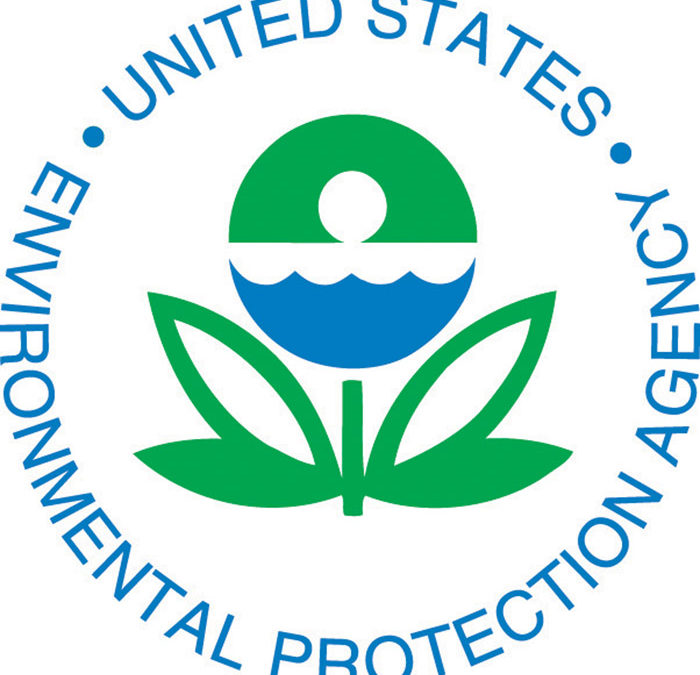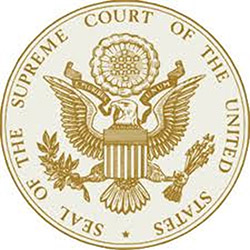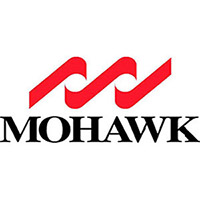
by Web Editor | Jun 17, 2013 | Update
LP, Nashville, Tenn., and Canfor-LP OSB Ltd. Partnership, Fort St. John, BC, won Safest Company Awards in their respective categories while RoyOMartin, Oakdale, La., earned the Innovation in Safety Award in the 2012 Safety and Health Awards Program sponsored annually by APA for the structural wood panel and engineered wood products industry.
LP earned top honors among companies with four or more mills with a 2012 average Weighted Incident Rate (TIR) of 0.58. The Canfor-LP OSB mill won its award in the category for companies with three or fewer mills. The company posted a perfect 0.00 TIR for 2012.
RoyOMartin’s Oakdale oriented strandboard mill took the innovation prize for the implementation of the “Safety Mentor” program. Developed to guide team members through their first year of employment and/or after a job transfer, the program covers various aspects of the organization to ensure employees do not “fall through the cracks.” Safety Mentor Team Leaders have a clear understanding of safety training and can verify new hires receive proper training. Team members that have completed the program have proven to have a better understanding of the safety culture at RoyOMartin. Safety Audit participation by new team members has increased by 50% and safety incidents for new team members have decreased by 86%.
A total of 23 facilities representing nine APA member companies—Abitibi – LP Engineered Wood; Ainsworth Lumber Co. Ltd.; Boise Cascade LLC; Canfor-LP OSB Ltd. Partnership; LP; Norbord; Potlatch Corp.; RoyOMartin; and Weyerhaeuser— earned awards in various competition categories of the 2012 program. Some of the mills were multiple award winners.
APA will present awards to the winning mills this summer, and the winners will be recognized at the Chairman’s dinner at the APA Annual Meeting in November.

by Web Editor | Jun 17, 2013 | Update
U.S. Environmental Protection Agency proposed two rules to “ensure” that composite wood products produced domestically or imported into the U.S. meet the formaldehyde emission standards established by Congress. In 2010, Congress passed the Formaldehyde Standards for Composite Wood Products Act, or Title VI of the Toxic Substances Control Act (TSCA), which establishes emission standards for formaldehyde from composite wood products and directs EPA to propose rules to enforce the act’s provisions.
EPA’s proposed rules align, where practical, with the requirements for composite wood products set by the California Air Resources Board (CARB), putting in place national standards for companies that manufacture or import these products. EPA’s national rules will also encourage an ongoing industry development toward switching to no-added formaldehyde resins in composite wood products.
EPA’s first proposal limits how much formaldehyde may be emitted from hardwood plywood, medium density fiberboard, particleboard and finished goods. The emitted formaldehyde may be left over from the resin or composite wood making process or be released when the resin degrades in the presence of heat and humidity. This proposal also includes testing requirements, laminated product provisions, product labeling requirements, chain of custody documentation, record-keeping, a stockpiling prohibition, and enforcement provisions. It also includes a common-sense exemption from some testing and record-keeping requirements for products made with no-added formaldehyde resins.
The second proposal establishes a third-party certification framework designed to ensure that manufacturers of composite wood products meet the TSCA formaldehyde emission standards by having their composite wood products certified though an accredited third-party certifier. It would also establish eligibility requirements and responsibilities for third-party certifiers and the EPA-recognized accreditation bodies who would accredit them. EPS says the proposed third-party certification program will level the playing field by ensuring composite wood products sold in this country meet the emission standards in the rule regardless of whether they were made in the U.S. or not.
“CPA congratulates EPA for today’s release of important proposed rules implementing the Congressional establishment of a tough, fair and enforceable national standard on formaldehyde emissions from composite wood products,” says CPA President Tom Julia. “We look forward to reviewing the proposed rules during the public comment period and ensuring that they are crafted in a manner that meets the objectives of the legislation.”
CPA will be developing comments through its Emissions Regulation Task Group and Board of Directors. CPA will also coordinate the development of comments from a broad coalition of trade associations and other stakeholders similar to the California Wood Industry Coalition (CWIC) that submitted group comments on the CARB regulation.
The law applies to nonstructural composite wood products and thus exempts structural wood products such as structural plywood, OSB, I-joists, glued-laminated timbers and LVL.
The monthly Panel World Industry Newsletter reaches over 3,000 who represent primary panel production operations.
Panel World is delivered six times per year to North American and international professionals, who represent primary panel production operations. Subscriptions are FREE to qualified individuals.
Complete the online form so we can direct you to the appropriate Sales Representative. Contact us today!

by Web Editor | Jun 17, 2013 | Taking Stock
Story by Dan Shell,
Managing Editor
The U.S. Environmental Protection Agency (EPA) recently released the agency’s proposed regulations for the first national standard for formaldehyde emissions from composite wood products. The move is required under the Formaldehyde Standards for Composite Wood Products Act that was signed into law in 2010. The proposal’s release sets up a public comment period on the potential regulations that runs through early August.
The new regulations prescribe how much formaldehyde may be emitted from hardwood plywood, medium density fiberboard, particleboard and finished goods made from those products. As noted in the news article on page 6, the EPA’s proposed rules cover two main areas: the definitions of formaldehyde emissions limits and the procedures for implementing them, and also the structure and responsibilities of Third Party Certifiers (TPCs) that will do most of the documenting of producer compliance with the new regulations.
In developing its response through the public comment process, Composite Panel Assn. is working with the Federal Wood Industries Coalition that includes APA—The Engineered Wood Assn., Hardwood Plywood & Veneer Assn., American Forest & Paper Assn. and additional trade groups from the furniture, millwork and chemical industries.
When the federal legislation underpinning the proposals was enacted in 2010, it was promoted as a way to develop a national standard for formaldehyde emissions from composite panel products, giving producers a level of certainty and relieving them from having to work with multiple state agencies and the feds to ensure products are in compliance.
The legislation and plan in 2010 was to adopt national formaldehyde regulations that had been implemented by the California Air Resources Board (CARB), which had adopted stringent emissions limits that went into effect in January 2009. The move was heralded as an issue where competing interests could work together.
Among the concerns CPA has listed with the initial EPA proposals are issues with the TPC process, including EPA recognition that will need to be synced with CARB system, and also record-keeping requirements for TPC testing and even EPA’s treatment of non-complying product lots, which CPA would like to see consistent with CARB practices.
The concept of creating a level playing field and avoiding a proliferation of laws and regulations depending on jurisdiction and marketplace is an admirable one. Then again, it’s easy to see the temptation on the part of EPA to put its own signature on the regulations and to develop a “better” version of the CARB regulations. But changing the substance of CARB’s regulations would betray the process that all sides committed to in 2010. Here’s to hoping EPA keeps its eye on what everybody else has already figured out.

by Web Editor | Apr 19, 2013 | Update
The Supreme Court recently ruled that logging roads are not subject to stringent industrial rules regarding stormwater runoff. The ruling in Decker v. Northwest Environmental Defense Center reverses a Ninth Circuit Court of Appeals decision that would have required Clean Water Act permits for stormwater that runs off logging roads.
According to Oregon Forest Industries Council, the rules would have required enormous compliance and permitting costs while opening the door for administrative challenges and litigation following every permit approval.
The Portland-based Northwest Environmental Defense Council had raised the issue in 2006 after arguing that such runoff posed threats to fish and other wildlife.
Essentially, the Supreme Court validated a recent Environmental Protection Agency interpretation of the runoff regulations. The EPA last year deemed that the stormwater permit regulation should extend only to traditional industrial buildings.
In 2006, the Northwest Environmental Defense Center sued certain timber-industry related defendants claiming that their logging activities resulted in the discharge of pollutants without a permit into streams in state forests in Oregon where they were harvesting timber. In 2010, the Ninth Circuit overturned an Oregon federal district court’s grant of a motion to dismiss the case, finding that ditches and culverts adjacent logging roads were point sources which required federal National Pollutant Discharge Elimination System (NPDES) permits.
The defendants in the case, who operated various logging roads, contended that the state’s Silvicultural Rule foreclosed the need for them to secure NPDES permits, and that potential impacts to water quality posed by the roads could be managed by state-level best management practices. Defendants also contended that, even without the Silvicultural Rule, their activities were not “industrial activities” requiring NPDES permits under USEPA’s Industrial Stormwater Rule.
The Supreme Court decision was a 7-1 vote, and written by Justice Kennedy.

by Web Editor | Apr 12, 2013 | Update
Mohawk Industries, Inc. is purchasing Spano Invest NV (Spano), a Belgian panel board manufacturer, for €125 million ($168 million) in cash. Spano’s 2012 revenues are estimated at approximately €180 million ($231 million). This transaction is expected to close in the second half of 2013.
Spano manufactures and distributes chip and melamine board, which are used to produce furniture and building products primarily in the Belgian market. Spano became a leader in the chipboard industry in 1977 when it introduced the first continuous press operations, significantly increasing its production capacity. Today, Spano operates facilities in Belgium and has an electricity plant joint venture that converts waste wood into green energy.
Jeffrey Lorberbaum, Mohawk’s chairman and CEO, states, “The combination of Unilin and Spano will create significant synergies to bring greater value to our customers and broaden our product offering. We look forward to bringing Spano’s talented team into the Unilin family.”
- Earlier, Mohawk Industries announced it had completed the acquisition of Pergo, a leading manufacturer of premium laminate flooring for $150 million in cash.




